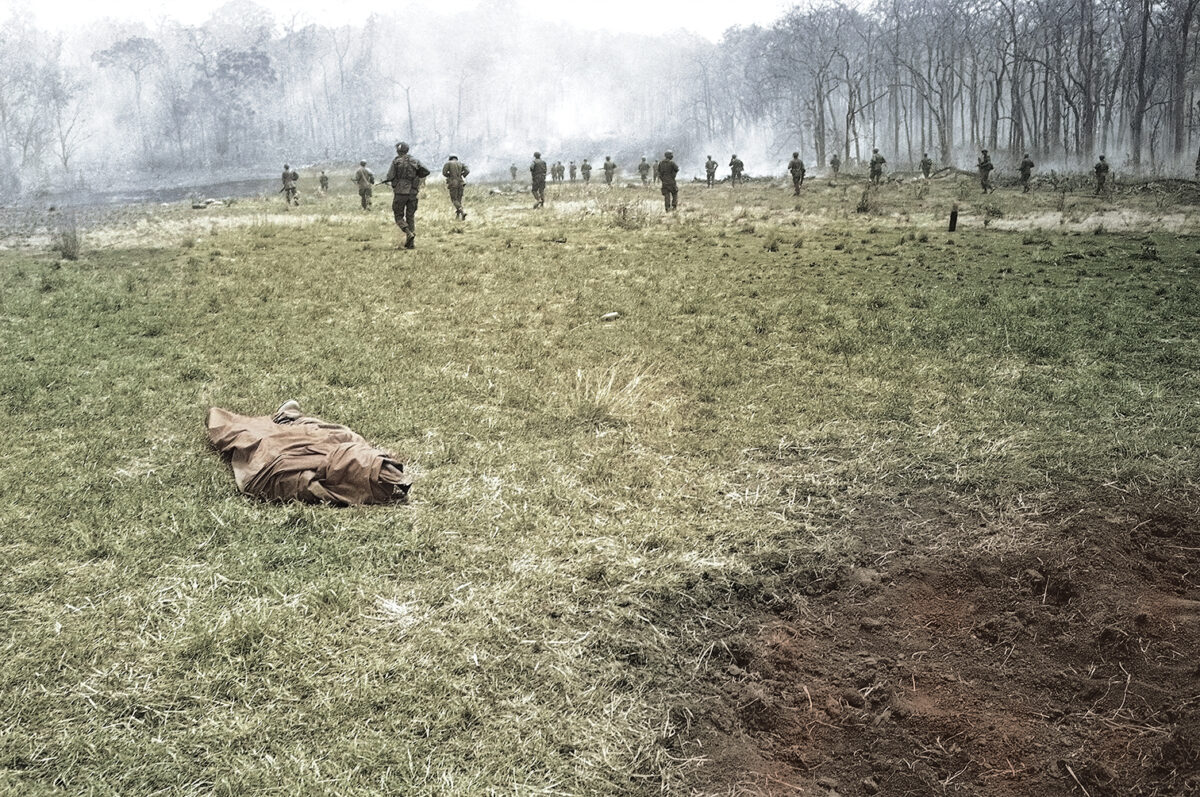Assuming command of the 4th Infantry Division in early January 1967, Maj. Gen. William R. Peers understood that his new assignment in the Central Highlands was something of an economy-of-force operation. The 4th was to monitor the Cambodian border, sound the alarm whenever the North Vietnamese Army returned in strength, and respond accordingly.
Lt. Gen. Stanley Larsen, then the commander of I Field Forces responsible for the Highlands, recommended using spoiling operations to keep the North Vietnamese off balance. “If you ever let him get set,” Larsen had cautioned Peers’ predecessor, Maj. Gen. Arthur Collins Jr., “you’re going to pay hell getting him out.”
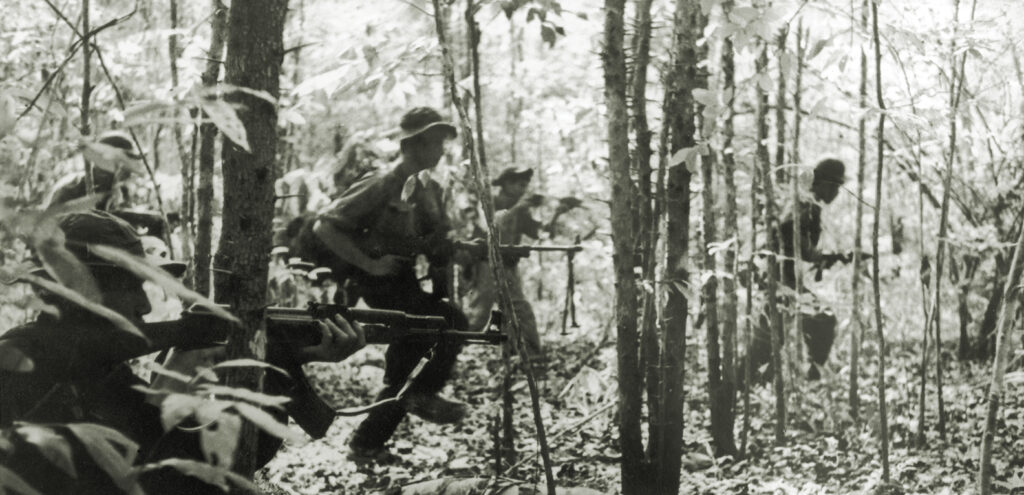
Collins initiated Operations Paul Revere IV and Paul Revere V (later renamed Sam Houston), the latter just two days before he turned the division over to Peers, as part of the 4th’s ongoing efforts to observe and counter enemy infiltration in the Highlands. Collins warned Peers that the North Vietnamese were constructing a “fortified redoubt” in the Plei Trap Valley—a rugged stretch of jungle between the Se San and Nam Sathay Rivers in western Pleiku Province.
At first, Peers found little evidence to support those suspicions. By February, however, aerial sightings, long-range reconnaissance patrols, and communications intelligence had detected signs of enemy activity in the Plei Trap. That activity was likely connected to Gen. Chu Huy Man’s plans for a winter-spring offensive. A veteran of the Viet Minh war against the French and commander of the Communist B3 (Central Highlands) Front, Chu intended to attack west of the Nam Sathay to disrupt Operation Sam Houston and prevent the Americans from destroying his rear areas and supply caches.
Responding initially with B-52 strikes, Peers based Col. James Adamson’s 2nd Brigade between the Plei Trap and Pleiku City and pushed two of its battalions across the Nam Sathay on Feb. 12. Adamson would soon tangle with elements of Col. Nguyen Huu An’s battle-tested 1st NVA Division west of the river, prompting Peers to recall his 1st Brigade from Phu Yen Province on the coast. Commanded by Col. Charles A. Jackson, the 1st assumed responsibility for the area between the two rivers, while Adamson was to continue working west of the Nam Sathay to the Cambodian border.
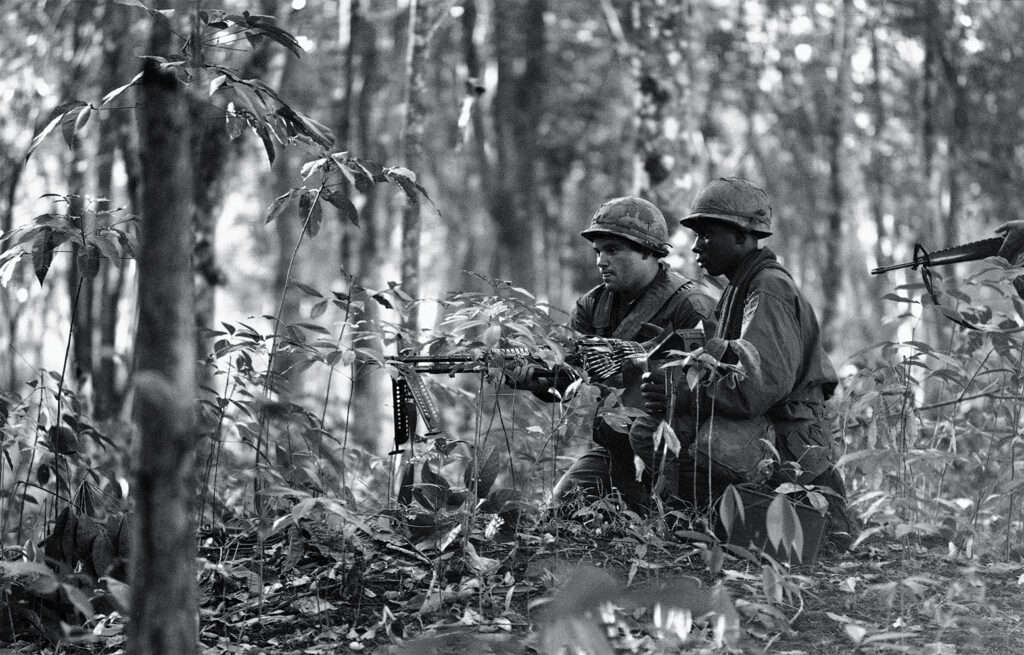
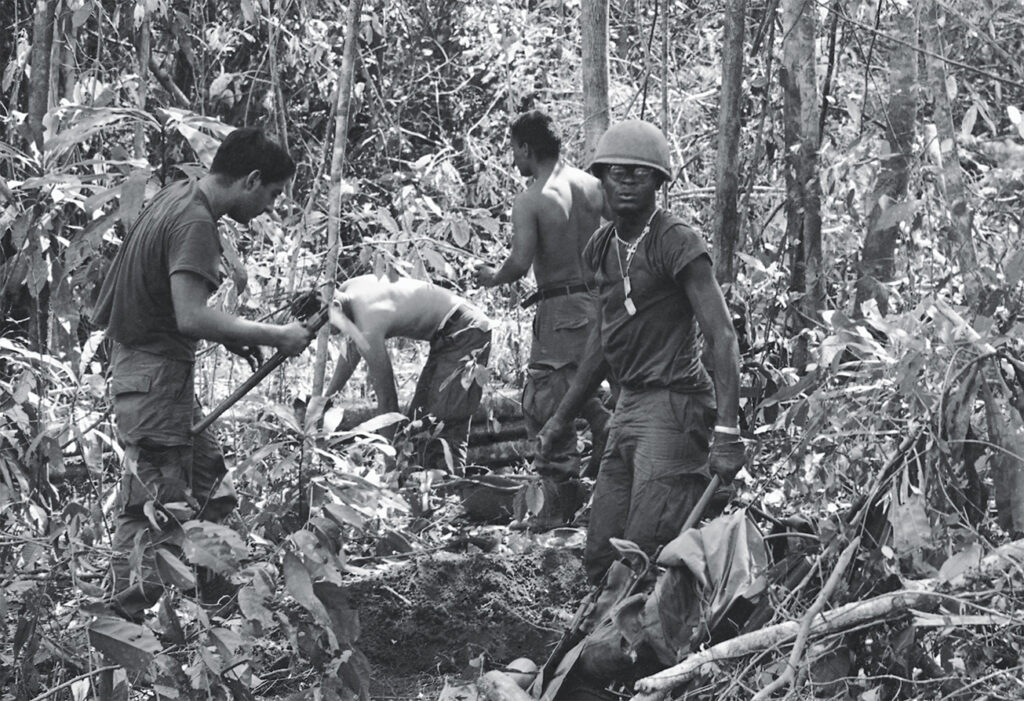
Over the next few weeks, the two brigades made regular contact with North Vietnamese regulars. Smaller skirmishes sometimes developed into much larger fights. While operating east of the Nam Sathay on March 12, the 2nd Battalion, 35th Infantry attacked a bunker complex, but could not eliminate the enemy position despite air and artillery support. The daylong battle cost the battalion 14 killed and 46 wounded. Abandoning the complex that night, the North Vietnamese left behind 51 dead, though another 200 may have been killed in the fighting.
Four days later, the 2nd Brigade shifted to the Plei Doc, a heavily jungled area that abutted the Cambodian border south of the Plei Trap. When the brigade lost radio contact with a long-range reconnaissance patrol (LRRP) team late on March 21, Adamson ordered Lt. Col. Harold Lee’s 1st Battalion, 8th Infantry to retrieve the missing men. Lee, recognizing the urgency of the mission, dispatched two companies the following morning.
Breaking camp early on the 22nd, Company A—led by Capt. William Sands, a hardnosed Citadel graduate—moved west-southwest along a ridgeline, flanked by Company B to the south. Company A had only maneuvered a short distance through the dense vegetation when Sands halted the four-platoon column and instructed his 1st Platoon to move forward and join the 2nd Platoon up front. The 3rd and 4th Platoon were to remain in a column formation behind the two lead platoons.
Slipping out of the company column, the 1st Platoon moved abreast of the 2nd Platoon around 7:30 a.m. “The First Platoon was to the left of us, probably fifty to one hundred yards,” noted Sgt. Ron Snyder, a squad leader in the 2nd Platoon. “We barely got lined out, when the First Platoon was hit.” Snyder hit the ground as the roar of enemy rifle and automatic weapons fire reverberated across the jungle.
Struck in the groin, a young soldier wailed in agony while a torrent of fire sliced through the 1st and 2nd Platoons from hidden positions along the ridgeline in front and to the left of Company A. The two lead platoons, trapped in what appeared to be the kill zone of a large enemy ambush, were being cut to pieces.
“I would say within the first four or five minutes, we had 27 killed and 45 wounded,” recalled medic John “Doc” Bockover. “I heard ‘medic’ and started running like hell to the front. There were NVA all around us.” While Bockover raced to treat the wounded, North Vietnamese troops swept around the pinned-down platoons, most likely in an attempt to outflank and encircle the entire company.
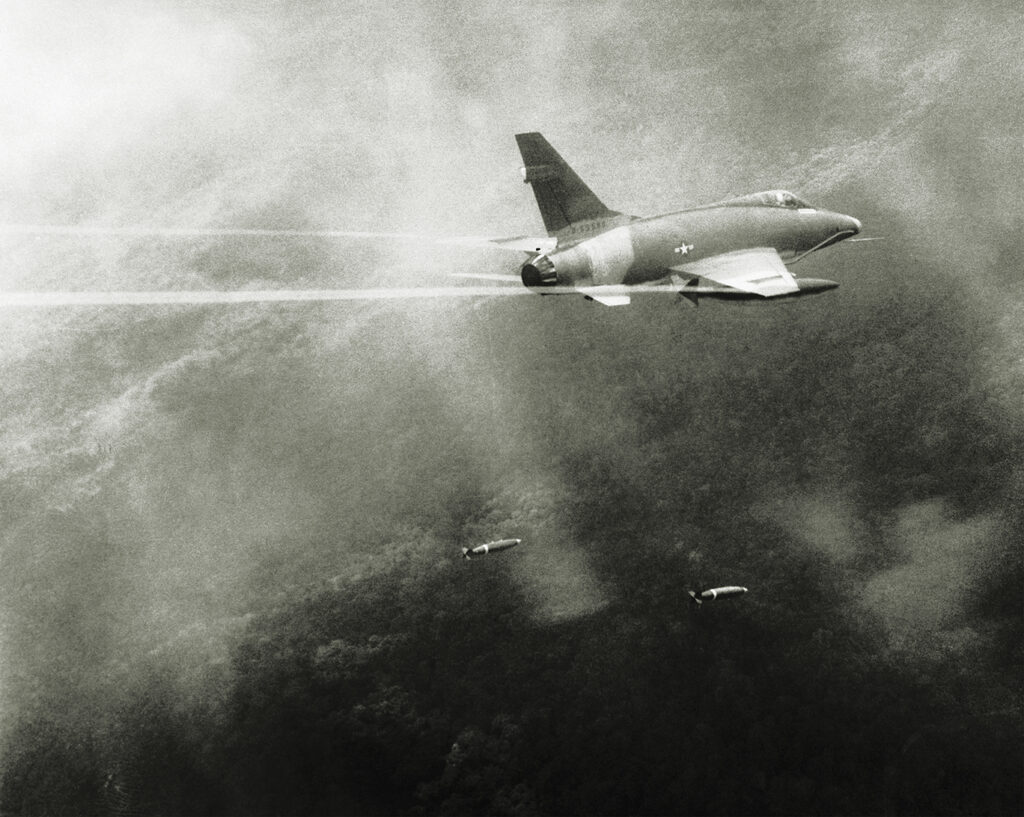
Sands, moving with the company command group behind the 2nd Platoon, requested artillery fire and attempted to organize a defensive perimeter. He also radioed Company B on the battalion radio net. “You got to get down here!” he shouted over the radio. “We are taking heavy casualties and don’t know how long we can hold out!”
Sands was adjusting artillery fire when a rocket-propelled grenade slammed into the command group. He was killed instantly. 1st Sgt. David McNerney, a tough career man on his third tour of duty in Vietnam, assumed command of the company and calmly rallied the shaken men.
Lee had spoken to Sands earlier in the battle and had directed Company B, commanded by Capt. Robert Sholly, to move at once to assist Company A. Company B, however, was already en route. Sholly had heard gunfire that morning. When he could not raise Sands over the radio, he immediately placed his four platoons online and headed west-northwest.
The sounds of battle grew louder as Company B made its way through the underbrush, hurried along by Sholly. Suddenly a pair of machine guns raked the 4th Platoon on the left flank of the company line. Pinned down in a bamboo field, the platoon returned fire. They could not silence the enemy machine guns nor the shadowy snipers perched in the trees above them. The North Vietnamese, later identified as a battalion from the 95B NVA Regiment, had positioned a blocking force between the two companies to prevent them from linking up.
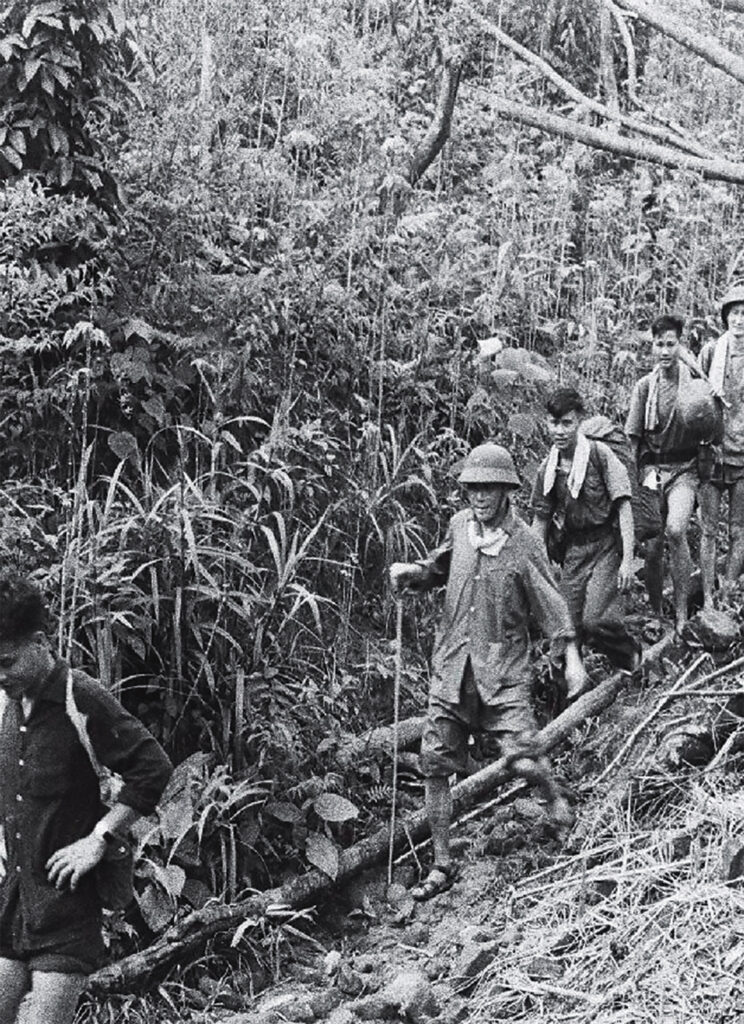
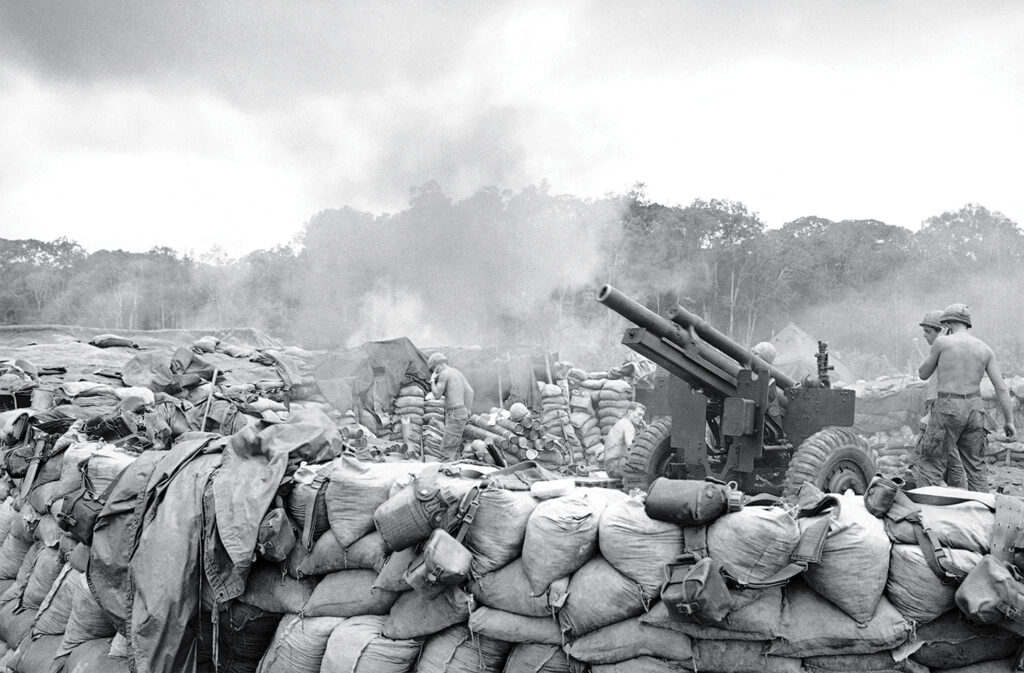
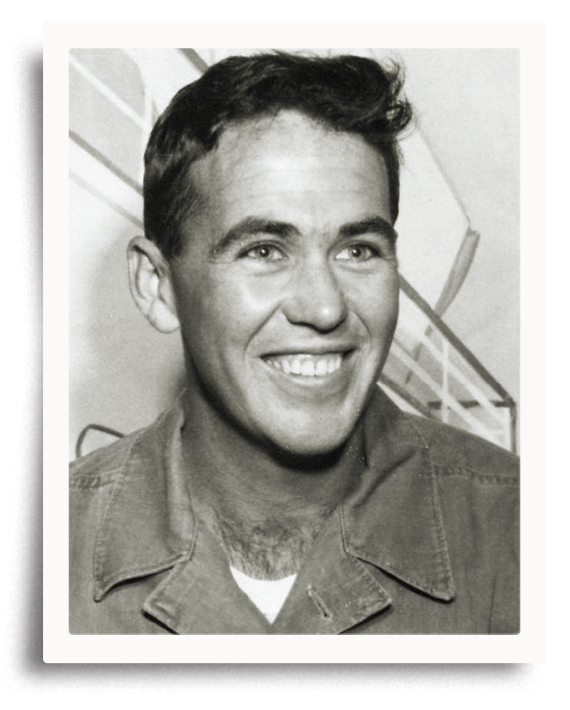
Worried he would not reach Company A in time, Sholly instructed his 2nd Platoon to flank the enemy force from the right. He hoped this would relieve some of the pressure on the 4th Platoon. Forming up quickly, the 2nd Platoon dashed forward and leapt into a dry creek bed approximately five feet wide and four feet deep. The bed provided a measure of cover. However, as the platoon prepared to scramble out of it to continue the assault, the startled troopers were met with a heavy volley of automatic weapons fire from enemy soldiers hidden on the opposite bank.
SP4 Victor Renza, one of two machine gunners in the 2nd Platoon, was setting up his M60 machine gun when a single rifle round whistled past his ear with an audible crack. Renza’s legs suddenly went limp, and he slumped back down into the creek bed without firing a shot. The color had drained from his face, and he could feel his heart thumping loudly. Convinced he had been targeted by an enemy sniper, Renza grabbed the M60 and, together with his assistant gunner, crawled along the bed in search of a new position for the gun.
The 2nd Platoon responded with M16s and M60s and was quickly drawn into a costly shooting match with the enemy blocking force. Stalled on the flanks, Sholly attempted to press ahead with the two platoons in the center of the Company B line, but the North Vietnamese refused to budge. “We could not see out of the brush and bamboo, so we were at a disadvantage,” he explained. “We set up fire in the trees but could not break the tie.” The advance had ground to a halt and the company had taken casualties. Facing the prospect of an even tougher fight, Sholly pulled his command post back and called on supporting arms.
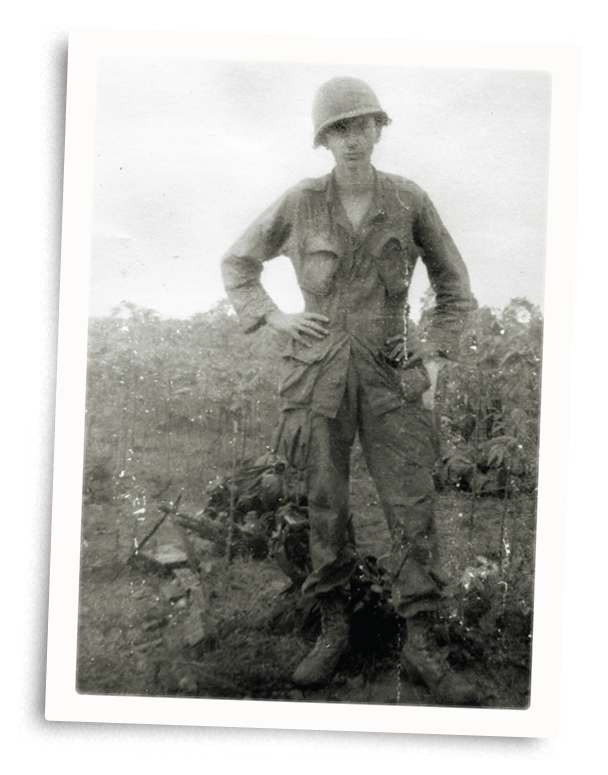
Meanwhile Company A had been split into two separate perimeters. As the North Vietnamese maneuvered on its flanks, past pockets of pinned-down troopers from the 1st Platoon, they bumped into the 3rd Platoon as it moved forward to link up with the 1st. Firing from the hip, machine gunners from the 3rd and a handful of grunts armed with M16s succeeded in slowing the enemy advance.
Though no longer in any immediate danger of being overrun, Company A needed firepower—particularly close-in artillery fire, to shatter the North Vietnamese assault. McNerney recognized as much. After taking over command of the company from the late Sands, he skillfully adjusted artillery fire in support of the company to within 20 meters of friendly positions.
The storm of incoming artillery shook the surrounding jungle. “I can’t begin to tell you how many rounds landed around or on us,” Pfc. Tom Carty observed. “The artillery came screaming in and then exploded with a deafening roar. Shrapnel was hitting everyone and cutting vegetation like a weed eater. It didn’t seem like the artillery would ever stop.” He added, “Round after round after round of artillery came screaming in, exploding, and sending hot deadly metal in all directions, killing [North Vietnamese] and U.S. soldiers without discrimination.”
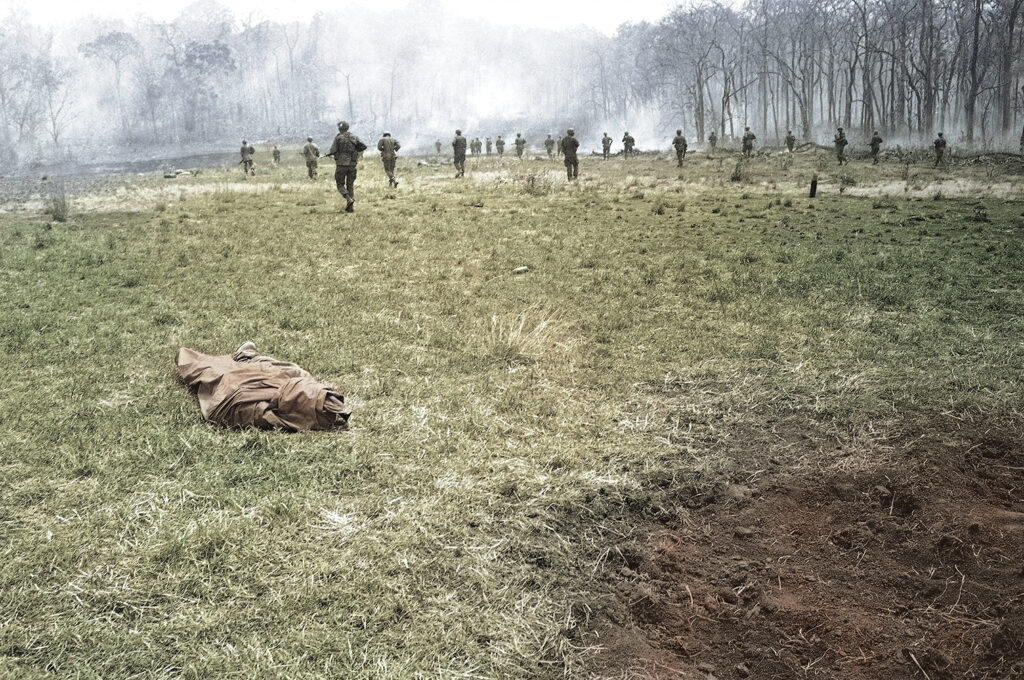
Gunships and fighter bombers hammered the enemy as well, and before long the sheer weight of American firepower began to ease some of the pressure on the embattled company.
Flying overhead in a UH-1B Huey helicopter, WO1 Don Rawlinson of the 4th Aviation Battalion asked Company A for a visual aid so that he could align his approach. McNerney, aware that Rawlinson’s overloaded bird carried desperately needed supplies, climbed a tall tree under intense enemy fire and tied a bright orange identification panel to the highest branch he could find to mark the company’s location. Rawlinson spotted the panel and hurriedly searched for a landing spot. “My God!” he yelled to his copilot as the chopper cruised in. “Can you believe someone climbed up there in that tree and did that?”
McNerney clambered up the tree although he had been knocked to the ground and injured by an enemy grenade earlier in the morning. Throughout the battle, he offered words of encouragement to the troops, checked in on the wounded, and at one point helped clear a landing zone for helicopters. For his extraordinary leadership and remarkable bravery, McNerney was awarded the Medal of Honor at a ceremony held at the White House in September 1968.
As the battle raged around Company A, the number of dead and wounded continued to increase. Bockover treated a wounded radioman and then moved with a squad leader from the 4th Platoon to aid a recent replacement who was lying against a tree, covered in blood.
Chunks of flesh and bone had been ripped from his face, and he was having difficulty breathing. As Bockover prepared to perform an emergency tracheotomy so that the wounded man could breathe, the soldier gazed up at his squad leader and asked if he had finally earned a Combat Infantryman Badge, a highly coveted decoration signifying that the wearer had participated in ground combat. Heartbreakingly, when his squad leader replied that he had done enough to earn a CIB, the man inhaled one final time and then died.
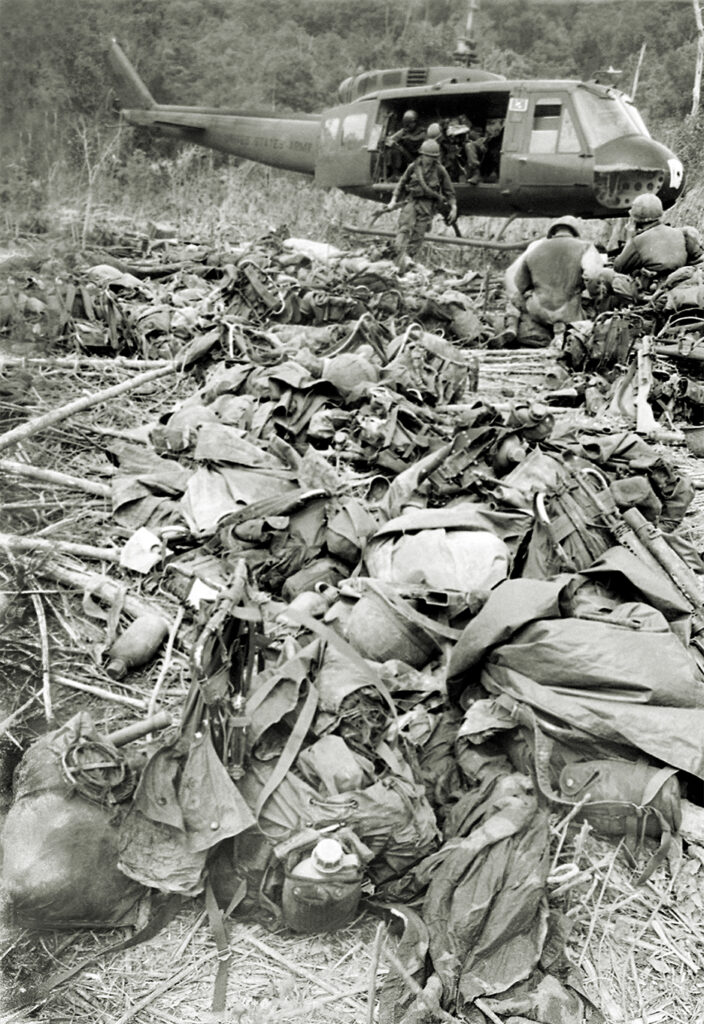
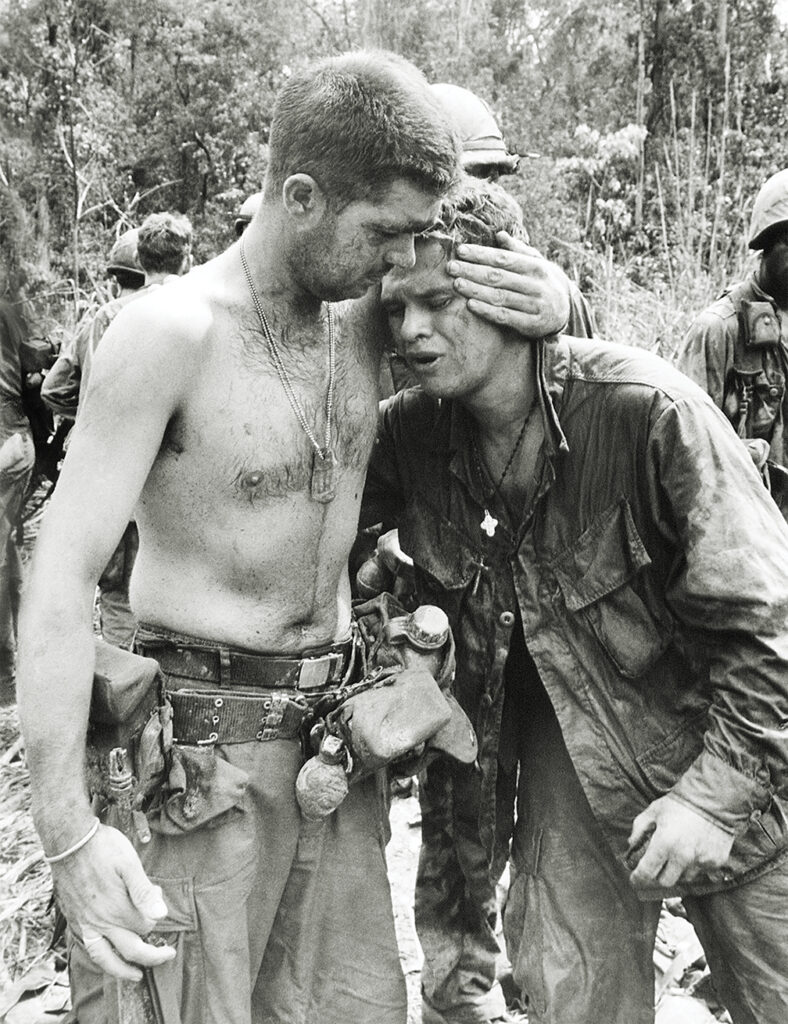
To the south and east of Company A, Sholly summoned all manner of fire support to destroy or dislodge the enemy force blocking Company B’s advance. Sholly pounded the North Vietnamese with 105mm and 155mm guns, fighter bombers, and several flights of A1-E Skyraiders loaded with napalm. Bolstered by this support, Company B was able to maintain freedom of maneuver and establish a more defensible position.
“Saying the platoons were able to consolidate their positions is a cold and distant description of what really went on,” Sholly acknowledged in his book, Young Soldiers, Amazing Warriors. “Each man was looking for targets, moving and shooting, throwing grenades, trying to look out for his buddies, calling for more ammunition, and hearing that hated call for ‘medic.’”
Combat Badge
Established on Oct. 27, 1943, the Combat Infantryman Badge or CIB was awarded to any U.S. Army soldier or Special Forces member below the rank of colonel who used his infantry skills in battle. Troops who did not see combat but who met the standards during specialized training could receive the Expert Infantryman Badge.
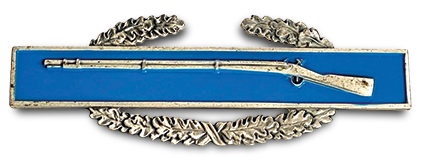
The cumulative impact of concentrated American firepower softened up the enemy blocking force. By early afternoon Company B was moving west-northwest again, carrying its dead and wounded. The firing tapered off as the North Vietnamese, battered by air strikes and artillery fire and fought to a standstill by Company A, withdrew from the battlefield.
Companies A and B eventually linked up later that afternoon. Taking command of both companies, Sholly met with McNerney, who informed him that Sands had been killed. Sholly, after lamenting the loss of his friend, advised McNerney that a perimeter large enough to accommodate two companies would have to be completed before night-fall. Company A would take up positions in the center of the perimeter. For the remainder of the day, the exhausted troopers evacuated the dead and wounded and dug fighting positions.
Fought for the most part at close range, the battle in the Plei Doc cost the 1st Battalion, 8th Infantry 27 killed and 48 wounded. Company A suffered the lion’s share of the losses, including 22 dead. The missing LRRP team was never found.
Adamson praised the performance of the battalion without considering the number of North Vietnamese killed in the fighting. “That evening at about 2300, General Peers asked me for an enemy body count—I said I had no idea,” Adamson admitted. “He said Saigon wanted to know. Later I received a call from Swede [Stanley] Larsen by secure radio asking the same question. I was to provide a number. I said ‘150.’ The next day we found about 45 bodies and had the body count previously given withdrawn and ‘45’ reported in its place.”
Officially, the 4th Infantry Division reported 136 enemy killed. Whatever the final number—and it was almost certainly higher than 45, given the North Vietnamese practice of removing their dead from their battlefield—Company A had survived the deadly ordeal. Many credit McNerney. “I know that God saved us,” wrote SP4 Willis Nalls of the 2nd Platoon, “but Top’s bravery was what got us out of that firefight.” While undoubtedly a critical factor, McNerney’s heroism alone would not have been enough to save the company without the courage and determination of the young “grunts” holding the line.
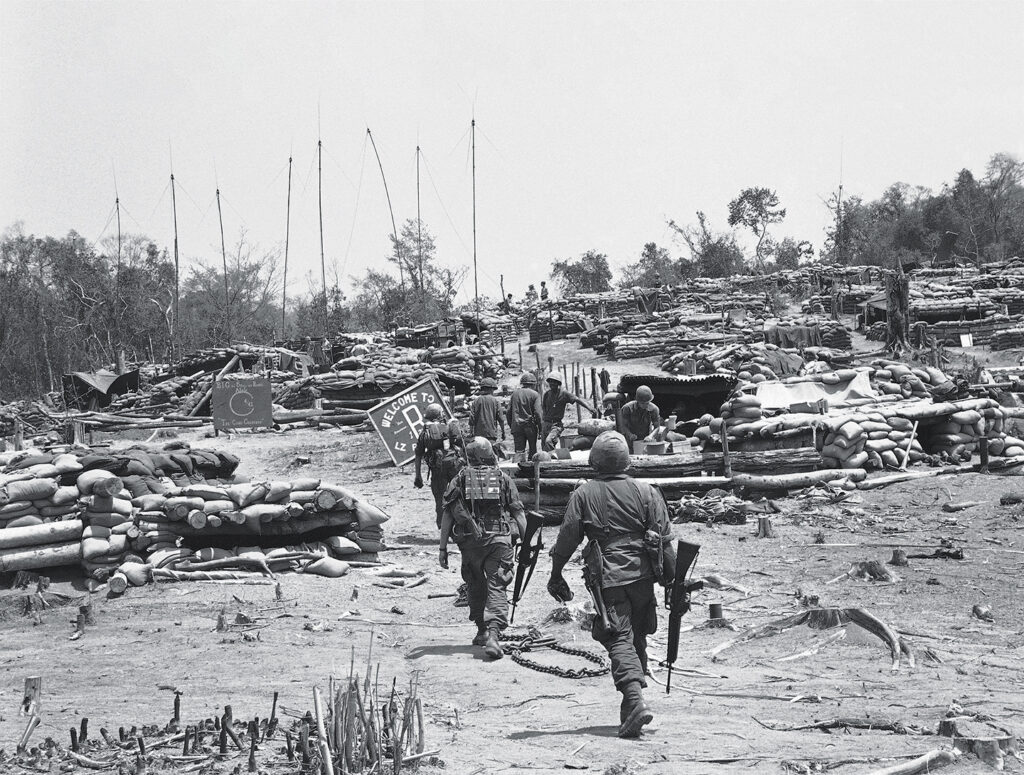
In May, Companies A and B moved into the remote Ia Tchar Valley in western Pleiku Province. On the morning of May 18, while investigating a well-worn trail near the Cambodian border, a platoon from Company B was ambushed and surrounded by a large enemy force. Company A received orders to reinforce its stricken sister company, even as some of its soldiers privately feared that the battle had all the makings of another March 22, only this time in reverse.
That night Company A stumbled around in the dark for hours searching for the “lost platoon.” Overrun and all but wiped out, the platoon was eventually found the following morning. “Those two days [March 22 and May 18] created a bond and a brotherhood between the two companies that has lasted for over 50 years,” said Renza, one of the “lost platoon” survivors. “When we got to them [Company A] in March, they were so happy to see us. We didn’t know who was coming for us. But when they found me on May 19, after the North Vietnamese had overrun us the day before, I couldn’t believe it was those same guys we’d gone to help in March. I know that they were determined to get to us.”
Warren Wilkins is the author of books and magazine articles about the Vietnam War and is a frequent contributor to Vietnam magazine.
This story appeared in the 2023 Summer issue of Vietnam magazine.
historynet magazines
Our 9 best-selling history titles feature in-depth storytelling and iconic imagery to engage and inform on the people, the wars, and the events that shaped America and the world.


